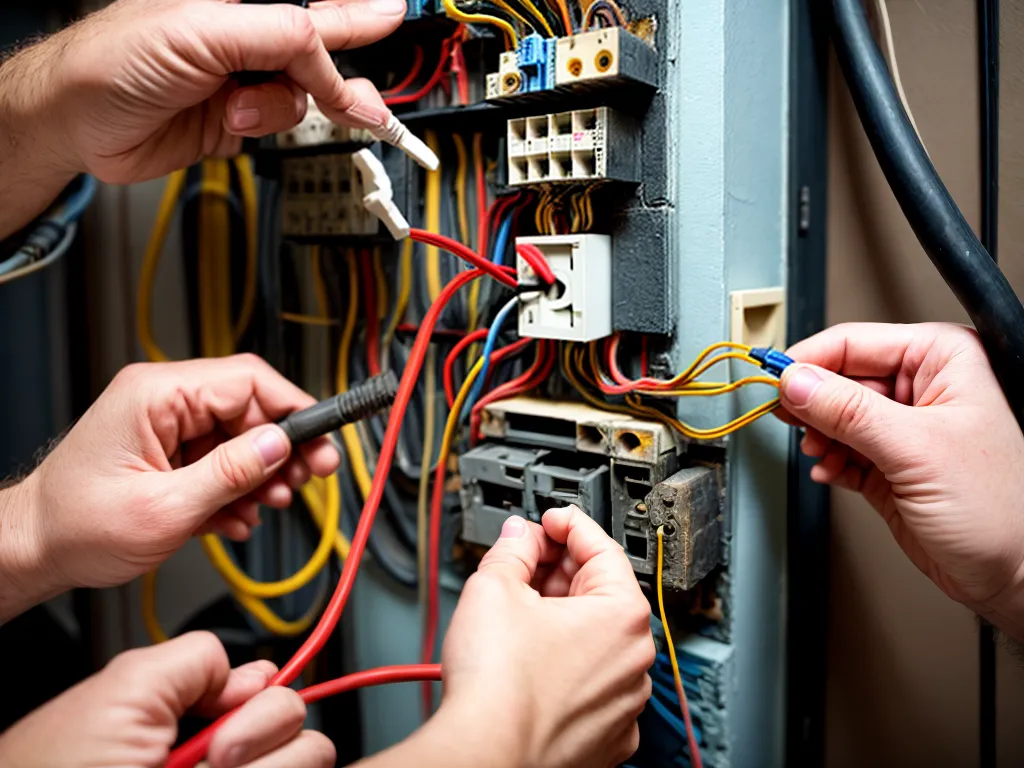
When dealing with electrical repairs in historic homes, owners often face a dilemma - how to upgrade the electrical system for safety while retaining the home's authentic historic character. As an owner of a 19th century Victorian mansion, I have struggled with this issue firsthand. In this article, we'll dive deep into the unique considerations around electrical updates in historic homes and examine potential solutions for compromising safely.
Balancing Safety and Preservation
The electrical systems in historic homes are often dangerously outdated by modern standards. Knob and tube wiring, overloaded circuits, improper grounding, and lack of GFCI outlets can all present fire and electrocution hazards. However, thoughtlessly replacing these antique systems with modern wiring and fixtures destroys the home's historic fabric and character. As stewards of these properties, owners must thoughtfully weigh safety concerns with preservation goals.
I faced this dilemma when confronted with rewiring my 1880s home. The existing knob and tube wiring did not meet modern safety codes, yet ripping it out would damage the original lath and plaster walls. After consulting with my local historic preservation society, I opted to compromise by leaving the wiring in less used parts of the house while safely upgrading more high-traffic areas. This balanced approach allowed me to enhance safety where it mattered most while retaining some antiquated wiring for historic charm.
Creative Solutions for Safety Upgrades
Thankfully, with care and creativity, many safety upgrades can be incorporated into old homes without sacrificing historic integrity. Some potential solutions include:
Strategic Rewiring
Prioritize upgrades in high-use areas like kitchens and bathrooms. Leave existing wiring in attics, crawlspaces and rarely used rooms. This minimizes disruption while enhancing safety where occupants spend the most time.
Inconspicuous Replacements
Replace antique switches, outlets and cover plates with period-appropriate reproductions. This disguises modern upgrades. I used reproduction early 20th century outlets and plates in my Victorian's public rooms.
Fishing Wire Through Walls
"Fish" new wiring through walls via inconspicuous access points to avoid damage. I was able to thread updated wiring through my plaster walls from the attic and basement.
Wireless Lighting and Outlets
Use wireless smart home technology like Hue lights and smart outlets to subtly upgrade wiring. I installed Hue bulbs in period light fixtures and connected modern lamps to wireless outlets.
GFCI and AFCI Circuit Breakers
Install protective circuit breakers at the main panel. This adds safety without rewiring. I protected my Victorian's old wiring with GFCI and AFCI breakers.
Temporary Outlets and Lighting
Use removable outlet boxes and LED lighting on stands during events. Then remove to restore the historic appearance after. I use these temporary measures when hosting large gatherings.
Consulting Local Preservationists
Upgrading home electrical systems requires balancing modern needs with historic preservation goals. Fortunately, help is available. Local historical societies, preservation groups, archivists, and historians can provide guidance on compromising safely while maintaining your home's heritage.
I turned to my city's preservation foundation for advice when upgrading my Victorian wiring. Their experts helped me find solutions to improve safety inconspicuously, like using period-appropriate switches and outlets. Consulting local specialists can help homeowners make the best choices for their historic home's unique needs.
Conclusion
Modernizing electrical systems in vintage homes often requires compromising between safety and historic integrity. While challenging at times, with careful planning, strategic upgrades, and input from preservationists, owners can enhance safety while retaining their home's antique charm and origins. Our historical architecture is worth preserving, but occupant safety must also remain the top priority. With some creative problem-solving, we can achieve a balance between the two in our historic and beloved old homes.